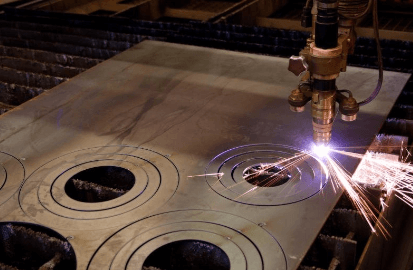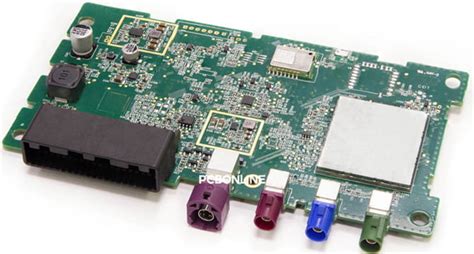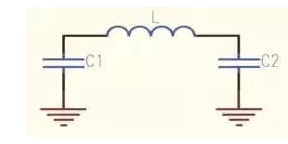Steel Laser Cutting Service: Precision, Efficiency, and Versatility
Introduction
In modern manufacturing and fabrication, precision and efficiency are critical factors for success. Steel laser cutting services have revolutionized metalworking by offering high accuracy, speed, and flexibility. This technology is widely used in industries such as automotive, aerospace, construction, and electronics due to its ability to produce intricate designs with minimal material waste.
This article explores the fundamentals of steel laser cutting, its advantages, applications, and considerations when choosing a laser cutting service provider.
What is Steel Laser Cutting?
Steel laser cutting is a thermal-based process that uses a high-powered laser beam to cut through steel sheets or plates with extreme precision. The laser beam melts, burns, or vaporizes the material along a pre-programmed path, resulting in clean, smooth edges.
Types of Laser Cutting Machines
- CO₂ Lasers – Best suited for cutting, engraving, and etching thicker steel sheets. They use a gas mixture (carbon dioxide, nitrogen, and helium) to generate the laser beam.
- Fiber Lasers – More efficient for cutting reflective metals like stainless steel and aluminum. They use optical fibers doped with rare-earth elements to produce the laser.
- Nd:YAG/Nd:YVO Lasers – Used for high-precision applications but are less common in industrial steel cutting due to higher operational costs.
Advantages of Steel Laser Cutting
1. High Precision and Accuracy
Laser cutting achieves tolerances as tight as ±0.1 mm, making it ideal for complex geometries and fine details that traditional cutting methods cannot achieve.
2. Speed and Efficiency
Compared to plasma or waterjet cutting, laser cutting is significantly faster, especially for thin to medium-thickness steel (up to 25 mm). Automated systems further enhance productivity.
3. Minimal Material Waste
The narrow laser kerf (cutting width) reduces material waste, optimizing cost-efficiency, especially for high-volume production.
4. Smooth Edge Quality
Laser-cut steel requires little to no post-processing, as the edges are clean and free from burrs.
5. Versatility
Laser cutting works on various steel types, including:
- Mild Steel
- Stainless Steel
- Carbon Steel
- Galvanized Steel
- Tool Steel
6. Automation and Repeatability
CNC-controlled laser cutters ensure consistent quality across large production runs, reducing human error.

Applications of Steel Laser Cutting
1. Automotive Industry
Laser-cut steel components are used in chassis, body panels, exhaust systems, and engine parts due to their strength and precision.
2. Aerospace and Defense
Critical aircraft components, such as turbine blades and structural brackets, require ultra-precise laser cutting for safety and performance.
3. Construction and Architecture
Steel beams, facades, and decorative metalwork benefit from laser cutting’s ability to create intricate designs.
4. Electronics and Appliances
Laser-cut steel is used in enclosures, heat sinks, and precision components for electronic devices.
5. Industrial Machinery
Gears, hydraulic parts, and machine frames often rely on laser-cut steel for durability and tight tolerances.
6. Art and Custom Fabrication
Artists and designers use laser cutting to create detailed metal sculptures, signage, and custom furniture.
Choosing the Right Steel Laser Cutting Service
When selecting a laser cutting service provider, consider the following factors:
1. Material Compatibility
Ensure the provider can handle the type and thickness of steel required for your project.
2. Cutting Technology
Fiber lasers are better for thin to medium steel, while CO₂ lasers are more suitable for thicker materials.
3. Precision and Tolerances
Verify the machine’s accuracy and whether it meets your design specifications.
4. Turnaround Time
Fast production and delivery times are crucial for meeting project deadlines.
5. Finishing Options
Some providers offer additional services like deburring, powder coating, or welding.
6. Cost-Effectiveness
Compare pricing models (per cut, per hour, or per project) to find the best value.
7. Certifications and Quality Standards
Look for ISO-certified providers to ensure high-quality results.

Future Trends in Steel Laser Cutting
1. Increased Automation with AI
AI-driven laser cutters optimize cutting paths, reduce errors, and improve efficiency.
2. Hybrid Laser Cutting Machines
Combining laser cutting with additive manufacturing (3D printing) allows for more complex part production.
3. Green Laser Cutting
Energy-efficient lasers and sustainable practices are becoming industry priorities.
4. Ultra-High-Power Lasers
New laser systems can cut thicker steel (over 50 mm) with improved speed and precision.
Conclusion
Steel laser cutting services provide unmatched precision, efficiency, and versatility for a wide range of industries. Whether for industrial manufacturing, automotive parts, or artistic designs, laser cutting ensures high-quality results with minimal waste.
By understanding the technology, advantages, and selection criteria, businesses can leverage laser cutting to enhance production capabilities and maintain a competitive edge. As advancements in automation and laser technology continue, the future of steel laser cutting promises even greater innovation and efficiency.
For businesses seeking reliable steel laser cutting services, partnering with an experienced provider ensures optimal results, cost savings, and superior product quality.





